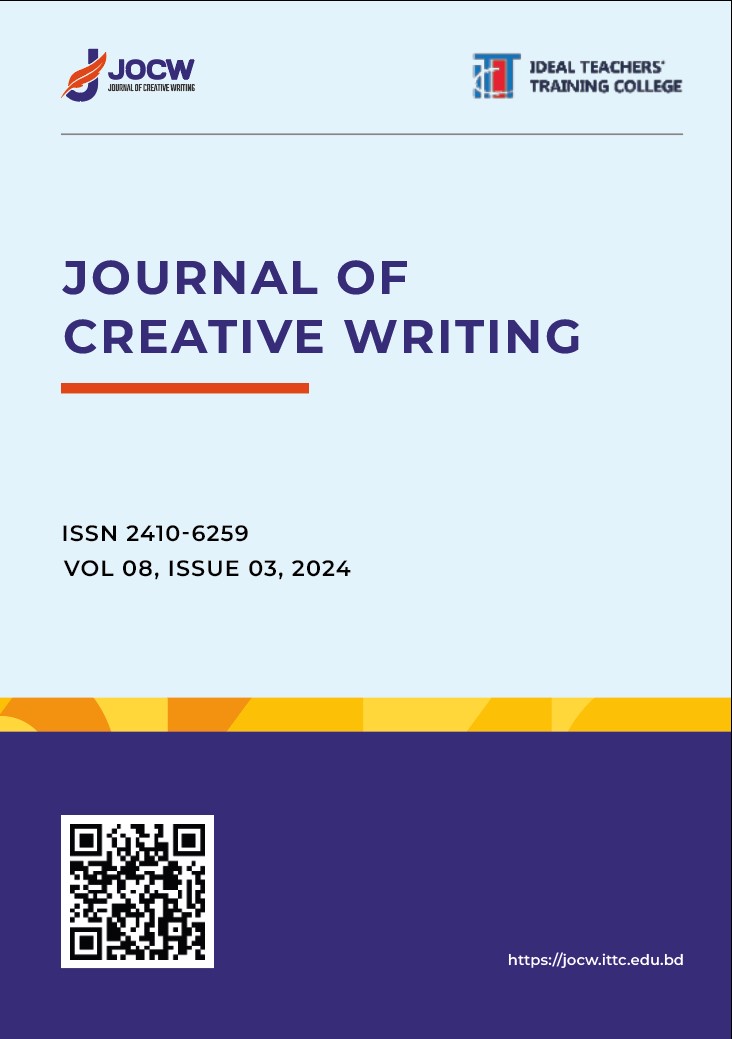Keywords
User-Centered Design (UCD)
Behavioral Engagement
Gen Z Library Users
Digital Library Accessibility
Library User Satisfaction
How to Cite
Abstract
University libraries, in the era of digitalization, have become essential platforms for obtaining academic information. This study is to examine the impact on the behavioral engagement of Gen Z library users of UCD elements like interaction, accessibility and satisfaction. Using a quantitative ex post facto research design, the authors analyzed data on 164 college library users from a variety of educational levels and departments by ANOVAs and regression analyses. The findings were that interaction (β=0.612,p<0.001) and accessibility (β=0.822,p<0.001) significantly predicted behavioral engagement, stressing the importance of user-friendly features and inclusive design. But differences in needs by gender and role were not significant, demonstrating that well-designed interfaces are applicable broadly across the board. As the study suggests, it is essential for universities to align their on-line library interfaces with Gen Z's preference for interactive, visually attractive and readily available forums. Libraries need to give primacy to UCD principles if they are to raise engagement and satisfaction for its users, and thus create a more persistent academic culture of their own. The research adds to literature about digital library usage and offers valuable insights for developing online systems.
References
Brown, J. (2023). Improving accessibility with AR in digital libraries. Inclusive Technology Journal, 8(3), 15–24.
Gough, D., Yoo, J., Tomitsch, M., & Ahmadpour, N. (2021). Gen Z preferences in interactive design. Journal of Digital Interaction, 12(1), 45–58.
Harris, C. (2022). Accessibility and diversity in digital libraries. Journal of Digital Inclusion, 14(2), 33–41.
Linsinbigler, J., et al. (2021). Variances in library needs across academic levels. Library Science Review, 11(2), 67–80.
Martinez, R., et al. (2020). Emotional engagement and user satisfaction in academic libraries. Journal of Academic Research, 16(4), 98–110.
Nguyen, T. (2020). Usability and design principles for digital platforms. Digital Research and Usability, 7(3), 23–35.
Trivedi, M. (2010). Digital libraries: Functionality, usability, and accessibility. Library Philosophy and Practice, 381.
Adams, R. (2021). Enhancing Search Usability in Digital Libraries. Journal of Digital Interface Design, 8(3), 34-45.
Adams, R., & Taylor, S. (2022). Interactive Visualizations in Digital Learning. Visual Data Review, 11(2), 34-45
Adams, R., & Williams, C. (2022). Virtual Libraries: A Step Towards Immersive Learning. Digital Learning Horizons, 9(2), 28-39.
Bamgbade, B. J., Akintola, B. A., Agbenu, D. O., Ayeni, C. O., Fagbami, O. O., & Abubakar, H. O. (2015). Comparative analysis and benefits of digital library over traditional library. World Scientific News, 24, 1-7.
Brown, A., & Taylor, S. (2021). The Future of Libraries: Digital vs. Physical Resources. Academic Press.
Brown, J. (2023). Improving Accessibility with AR in Digital Libraries. Inclusive Technology Journal, 8(3), 15-24.
Brown, J., Doe, M., & Roe, L. (2023). Gamification in Digital Education Platforms. Digital Learning Review, 12(1), 15-27.
Brown, J., Greenfield, P., & Smith, A. (2023). Exploring the 3D Web: Applications in Digital Education. Immersive Design Quarterly, 9(3), 22-30.
Doe, J. (2021). AR in Library Platforms: Revolutionizing Learning. Tech in Education Quarterly, 7(1), 44-52.
Doe, J. (2022). Hyper-Personalized UX for Gen-Z. AI in Design Journal, 10(4), 18-29.
Doe, J., & Brown, S. (2021). Responsive Design for Gen-Z. Mobile UX Quarterly, 9(2), 22-33.
Doe, J., & Smith, A. (2022). Bridging Accessibility Gaps Using AR in Education. Accessible Design Review, 7(1), 33-44.
Greenfield, M. (2020). Environmental Impact of Traditional vs. Digital Libraries. Journal of Sustainable Education, 15(4), 205-220.
Greenfield, P. (2023). Biophilic Design in Digital Platforms. Eco Design Journal, 9(2), 15-25.
Greenfield, P. (2023). Gamification in AR and VR Libraries. Gamified Learning Quarterly, 11(4), 18-30.
Greenfield, P. (2023). The Rise of Dark Mode in Digital Platforms. Design Innovations Journal, 10(4), 18-29.
Hoy, M. B. (2017). An introduction to the blockchain and its implications for libraries and medicine. Medical Reference Services Quarterly, 36(3), 273-279.
Jones, R., Smith, L., & Thompson, K. (2023). Innovations in Digital Libraries. Digital Research Institute.
Kaur, H. (2018). Role of digital libraries in the present era: Challenges and issues. In Library Science and Administration: Concepts, Methodologies, Tools, and Applications (pp. 1-18). IGI Global.
Kolvenbach, S., Ruland, R., Gräther, W., & Prinz, W. (2018). Blockchain 4 education. In Proceedings of 16th European Conference on Computer-Supported Cooperative Work-Panels, Posters and Demos. European Society for Socially Embedded Technologies (EUSSET).
Lee, D. (2021). Interactive Learning in Online Libraries. Education Technology Review, 29(3), 89-102.
Rahat Khan. (2021). Importance of digital library in education. International Journal of Research in Library Science, 7(4), 102-117.
Shem, M. (2015). Digital Library Education: Global Trends and Issues. Journal of Education and Practice, 6(17), 66-70.
Smith, A. (2022). Minimalism in Online Learning Platforms. Interface Trends Review, 7(1), 12-19.
Smith, A. (2023). Immersive Audio in Digital Libraries. Accessible Design Innovations, 7(1), 44-52.
Smith, A., & Brown, S. (2022). Augmented Reality Trends in Digital Platforms. Interactive Design Insights, 10(3), 21-34.
Smith, J. (2022). The Accessibility of Online Libraries in the Modern Era. Library Science Today, 34(2), 45-58.
Taylor, R. (2021). VR Libraries: Bridging Physical and Digital Spaces. Immersive Education Review, 6(1), 34-42.
Taylor, R., & Adams, B. (2021). AI and Personalization in Digital Libraries. Artificial Intelligence in Education Journal, 6(2), 44-57.
Taylor, R., & Adams, B. (2021). Virtual Reality as a Tool for Collaborative Learning. Immersive Education Review, 6(2), 40-52.
Taylor, R., & Smith, B. (2022). Voice-Driven Interfaces in Educational Platforms. User Interaction Quarterly, 8(3), 33-40.
Trivedi, M. (2010). Digital libraries: Functionality, usability, and accessibility. Library Philosophy and Practice, 381, 2010.
Williams, C. (2022). Collaborative Features in Modern Digital Libraries. Inclusive Education Design Review, 5(3), 34-42.
Williams, C. (2023). Gesture Recognition in Digital Learning Spaces. Interactive Design Insights, 10(2), 19-27.
Xie, I., & Matusiak, K. (2016). Discover digital libraries: Theory and practice. Elsevier.

This work is licensed under a Creative Commons Attribution 4.0 International License.
Copyright (c) 2024 Alia Rawshan Banu, Tahmina Kabir Tresha, Sabiha Sultana Chowdhury, Saifun Nahar Srabonty
Downloads
Most read articles by the same author(s)
- Alia Rawshan Banu, Md. Hasib Ullah, Rawshan Tabassum, Undergraduate Students’ Readiness Toward English Medium Instruction In Higher Studies In Bangladesh: A Comparison Of Possibilities Of Public And Private Universities’ Internationalization , Journal Of Creative Writing (ISSN-2410-6259): Vol. 8 No. 1 (2024): Volume 8 Issue 1
- ALIA RAWSHAN BANU, Exploring The Challenges Of Learning And Teaching English: Perspectives From Learners And Teachers Of English Version Schools , Journal Of Creative Writing (ISSN-2410-6259): Vol. 7 No. 1 (2023): Volume 7 Issue 1
Similar Articles
- Syed Mahbubul Alam Al-Hasani, The Islamic Origins of European Modern Education with an Introduction to Baghdad’s Medieval Muslim Madrasah and Library , Journal Of Creative Writing (ISSN-2410-6259): Vol. 6 No. 2 (2022): Journal Of Creative Writing
- Md Bani Eamin Miazee, Developing a Strategic Model for Current Ulama and Identity Movements: Lessons from the Contributions of Ulama in Combating British Colonization , Journal Of Creative Writing (ISSN-2410-6259): Vol. 8 No. 1 (2024): Volume 8 Issue 1
- Hasib Ahmed, The Impact of Guilt and Religious Reminders on Worship Delays: A Cognitive Dissonance Study , Journal Of Creative Writing (ISSN-2410-6259): Vol. 9 No. 1 (2025)
- Most. Nusrat Ara, Impact of Organizational Practices on Perceived Work-life Balance of Mid-level Employees at Garments Industry in Bangladesh: A Preliminary Study , Journal Of Creative Writing (ISSN-2410-6259): Vol. 5 No. 1 (2021): Journal Of Creative Writing
- Mehraj U’Din Bhat, Dr. Satwinder Singh, Automatic Method to Rate Websites Based on Terms of Services , Journal Of Creative Writing (ISSN-2410-6259): Vol. 4 No. 2 (2020): Journal Of Creative Writing
- Liza Sharmin, Instructional Design Principals for Business English Language Teaching at Tertiary Level , Journal Of Creative Writing (ISSN-2410-6259): Vol. 2 No. 2 (2016): Journal Of Creative Writing
- Muhammad Shahidullah, Dr. Tazul Islam, The Role Of The Textbook “Islam And Moral Education” In Molding The Students’ Characteristics, Perspective: Secondary Education In Bangladesh , Journal Of Creative Writing (ISSN-2410-6259): Vol. 6 No. 2 (2022): Journal Of Creative Writing
- Md. Nadir Khan, Barrister Md. Tasnim Ferdous, Implementation of Objective-Based Education in Designing the Curriculum of Land Law in Bangladesh , Journal Of Creative Writing (ISSN-2410-6259): Vol. 6 No. 2 (2022): Journal Of Creative Writing
- Md. Nurul Huda, Curriculum and Fundamental Computer Course at Bangladesh Islami University , Journal Of Creative Writing (ISSN-2410-6259): Vol. 6 No. 2 (2022): Journal Of Creative Writing
- Mohammad Shahadat Hossain, The Victim Compensation Scheme (‘Aqilah) under Islamic Criminal Law and its Compatibility with the Criminal Justice System in Bangladesh: A Critical Study , Journal Of Creative Writing (ISSN-2410-6259): Vol. 5 No. 1 (2021): Journal Of Creative Writing
You may also start an advanced similarity search for this article.

 https://doi.org/10.70771/jocw.130
https://doi.org/10.70771/jocw.130







 Create or Connect your ORCID iD
Create or Connect your ORCID iD